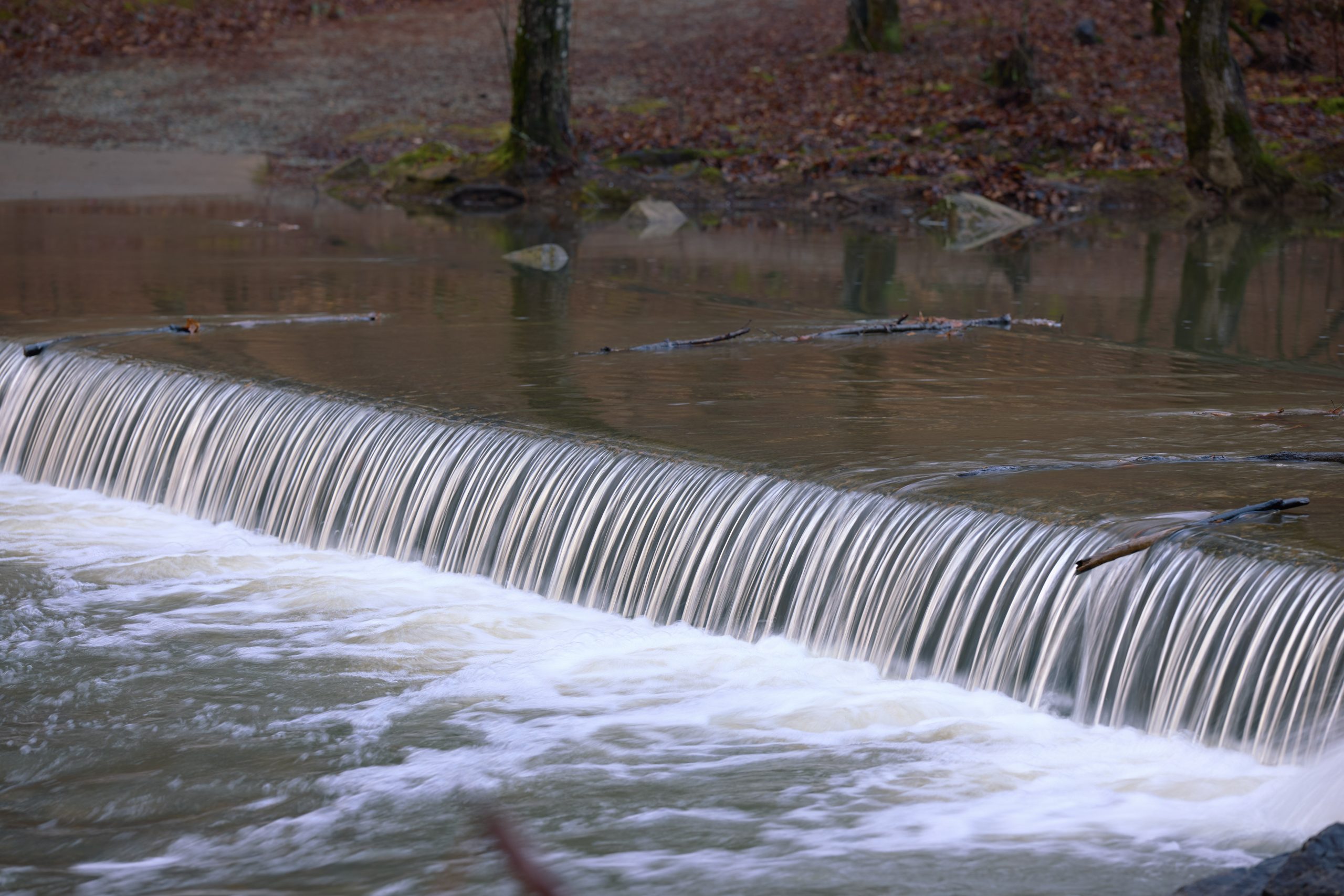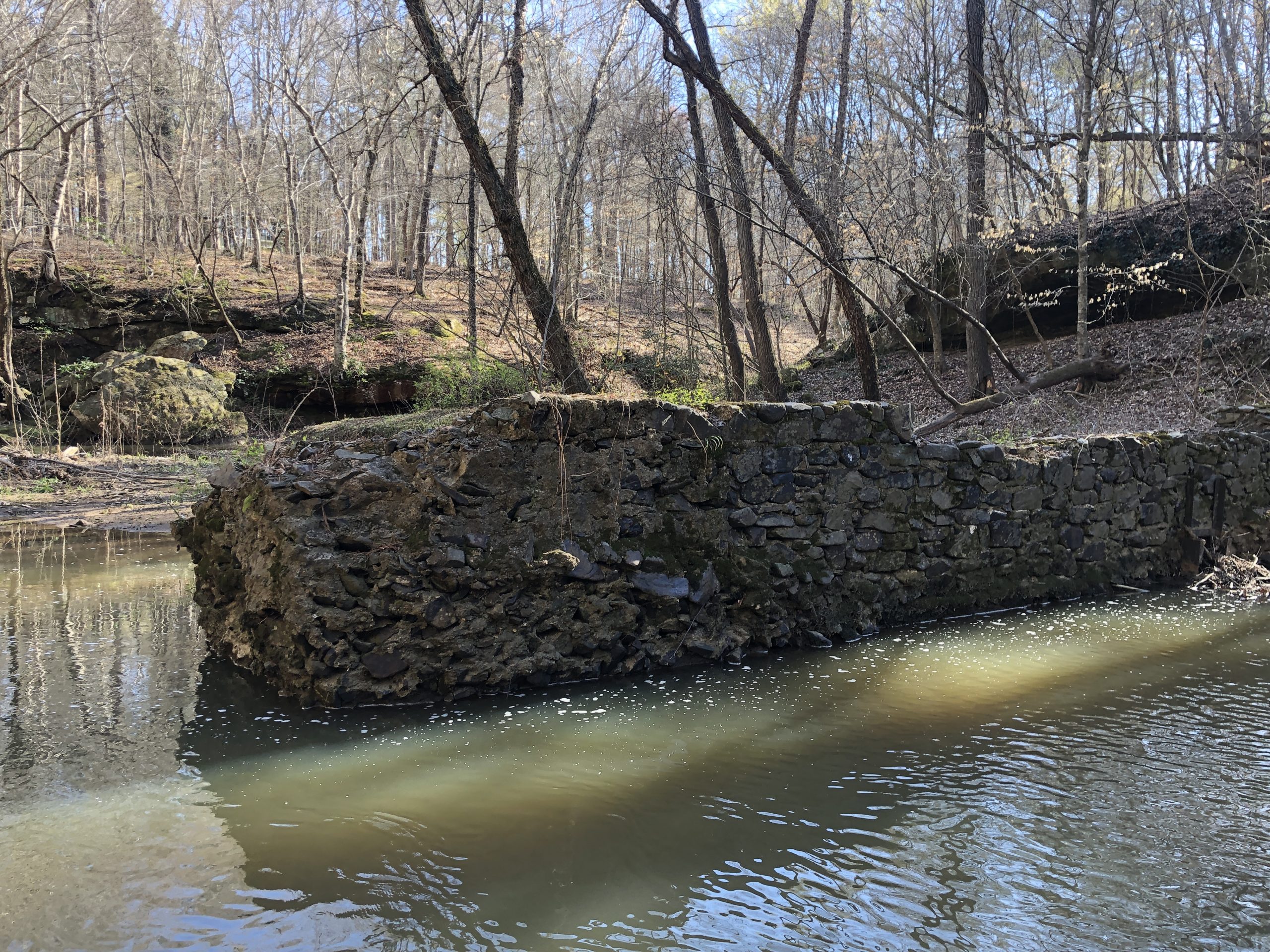
Quick Links: Alerts and Closures | Closure Map | About the Projects | Frequently Asked Questions
► Current status (6/18/25):
► Status update (6/13/25):
► Status update (6/4/25):
Alerts and Closures:
Project Site #1: Concrete Bridge
To facilitate access to the first project site, which is the Concrete Bridge, Duke Forest staff have begun working with the contractors to familiarize them with our forest and to carefully plan and execute necessary tree removals, limbing, and road work ahead of equipment and material staging. Staff are deploying ATTENTION SIGNS at all Korstian gates to raise awareness of the upcoming closure.
Timing and Impacts to Recreational Use:
Now thru Late June
Duke Forest facilitative projects are beginning Wednesday, June 4th and will continue as needed through the duration of the project. All recreational visitors in the Gate 25 area of the Korstian Division off Whitfield Road should expect to see forest staff working with heavy equipment and power tools and should take appropriate caution.
Late June thru Late Summer
OPEN areas: Beginning in late June, recreational visitors to the Korstian Division can continue to use and access some of the authorized forest road and trail system through Gates 21, 23, 24, 26, and via the trail from the Hollow Rock Nature Park.
CLOSED areas: Beginning in late June, a portion of the authorized roads and trails in the Korstian Division will be closed to recreation to ensure safety. All recreational visitors should plan to use the OPEN areas within the Korstian Division, other Duke Forest divisions, or other nearby lands managed for nature-based recreation.
- CLOSED GATE: Gate 25 off Whitfield Road will be closed for recreational access. This will be the main gate for all construction traffic.
- CLOSED ROADS: Concrete Bridge Road south of Big Bend Fire Trail, Hard Climb Road, Midway Fire Trail, Trice Fire Trail, and Echinata Fire Trail.
- CLOSED TRAILS: New Hope Creek North between Echinata Fire Trail and Big Bend Fire Trail, New Hope Creek South at Rhododendron Bluffs, Connector Trail between Gate 25 and Laurel Hill Fire Trail.
These closures will remain in effect 7 days/week for the duration of the work at Project Site #1 and will likely overlap with closures that go into effect to facilitate the Deer Herd Reduction Program.

Download the updated recreation map to reroute your trip.
The digital Korstian Division closure map is available here.
To download digital recreation maps for all of our divisions, please fill out this form.
About the NHC Restoration Projects:
The Duke Forest Teaching and Research Laboratory is Duke University’s 7,100-acre teaching and research forest. The Office of the Duke Forest manages this resource to meet multiple objectives, including the conservation and stewardship of natural resources. The goal of Duke Forest’s NHC Restoration Projects is to improve aquatic habitat, restore aquatic habitat connectivity, stabilize stream banks, and promote and protect freshwater mussel populations through the removal of two in-stream, human-made structures. These projects address long-standing infrastructure issues that negatively impact the health and function of NHC.
Project Site #1: Concrete Bridge
At the heart of the project is the replacement of the Concrete Bridge (CB), a low-water crossing constructed in the 1930s by the Civilian Conservation Corps. Originally outfitted with four metal culverts, two are now permanently clogged and the others frequently obstructed, causing the structure to act as a dam during low flows. The CB disrupts the natural movement of aquatic organisms, degrades and fragments aquatic habitat, and artificially impacts water flow and quality. Also, it is the only structure that provides official passage across the creek for forest management vehicles, emergency vehicles, and recreational visitors, but it fails to consistently provide this function depending on flow conditions.
Removal and replacement of the CB will restore more natural flow conditions, improve aquatic habitat and passage for native aquatic organisms including fish and mussels, prevent further degradation of the streambed, and mitigate erosion of the stream banks. The replacement bridge will avoid placing any structures within the stream habitat, and as it will be elevated over average stream height, it will consistently provide safe, dry passage during all typical flow conditions through all seasons.
Project Site #2: Billy Erwin Dam
Roughly a mile downstream, the partially breached Billy Erwin Dam, built in the early 1900s for a hydropower project that was never completed, continues to alter the natural flow of NHC. Water now bypasses the structure on one side, rapidly eroding the adjacent streambank and threatening nearby hiking trails. This erosion also leads to significant sedimentation downstream, where a mid-channel island has formed, further impairing aquatic habitat and stream function. Removal of this structure will restore more natural flow conditions, reduce erosion along the north bank, and allow for stabilization of the nearby hiking trails.
Project Details and Timeline
- Stage 1: Construction of a new, clear-span bridge approximately 150 feet upstream from the Concrete Bridge. The new bridge will be carefully positioned where the natural topography allows it to integrate seamlessly into the existing fire road network. Designed to withstand high-flow events, including those predicted in 100-year storm scenarios. Expected completion: Summer.
- Stage 2: Deconstruction and removal of the Concrete Bridge to allow the creek to move unimpeded, restoring its dynamic equilibrium. Expected completion: Late summer-early fall.
- Stage 3: Demolition of the defunct Billy Erwin Dam. Material from the dam will be left in-situ to shore up the stream banks. Expected completion: Early fall.



Our Partners
Funding for the projects was secured through partnerships and generous private donations. Working with our friends at Triangle Land Conservancy, we secured a grant from the North Carolina Land and Water Fund. A leadership-level gift from Brad and Shelli Stanback, along with significant donations from Alston Gardner and Adam and Rosalind Abram, helped us reach the $2 million threshold to begin the projects. Additional support from Tim and Lori Rowe was earmarked to create the NHC Teaching and Research Fund to leverage this pivotal moment in the Forest’s history in service to its mission as teaching and research laboratory (details below).
Teaching and Research Opportunities
These projects readily achieve the first goal of the Duke Forest Strategic Plan, which is to steward the natural, financial, and human resources of the Duke Forest for long-term success and sustainability as a major University asset for research, teaching, and community engagement. They also uniquely exemplify Duke’s Climate Commitment through achieving the essential work of stewarding our natural environment through the implementation of sustainable solutions across Duke’s infrastructure and operations.
Restoring this vital ecosystem is about more than just completing the construction projects; it’s about ensuring that the restoration efforts have a lasting and measurable impact. Our team is dedicated to thorough environmental assessment and research to fully understand the ecological benefits of these projects and to provide students with hands-on field experience, empowering the next generation of environmental leaders with the tools to transform knowledge into action.
We plan to:
- Capture high-resolution LiDAR data through seasonal drone flights to track the evolution of the creek’s geomorphology and floodplain changes over time.
- Monitor New Hope Creek for macroinvertebrates because their presence, diversity, and abundance are key indicators of water quality and overall stream health.
- Support Duke courses by providing students with hands-on learning opportunities using water testing kits and fieldwork.
- Sustain our partnership with the North Carolina Wildlife Resources Commission, enabling us to monitor critical habitat for the federally threatened Atlantic Pigtoe mussel.
- Fund exploratory research opportunities with Duke graduate students, allowing for innovation without the constraint of securing outside funding.
Public education and engagement opportunities will be advertised on our website and in our monthly email newsletter.
Frequently Asked Questions
Click each question to read the answer.





